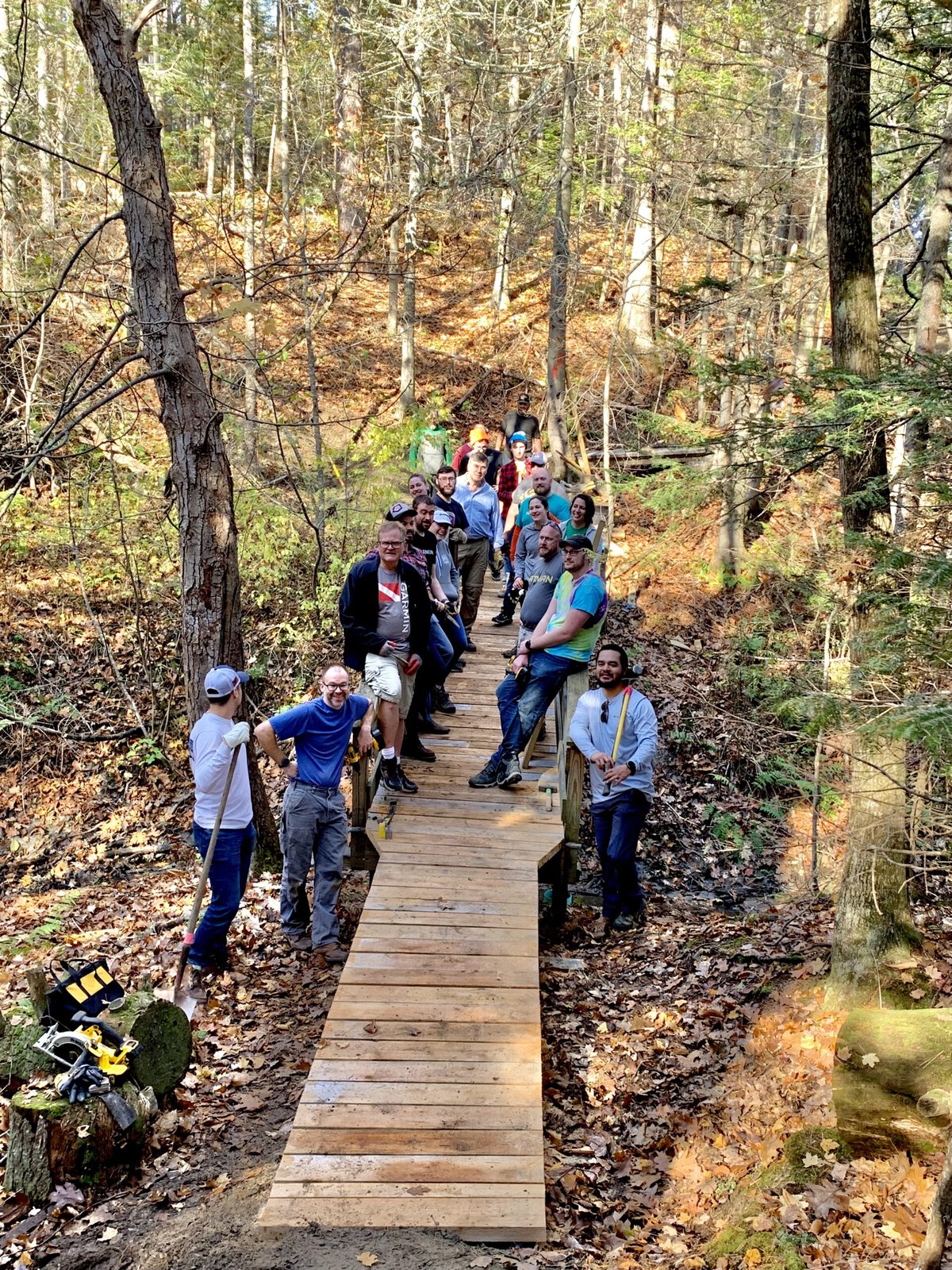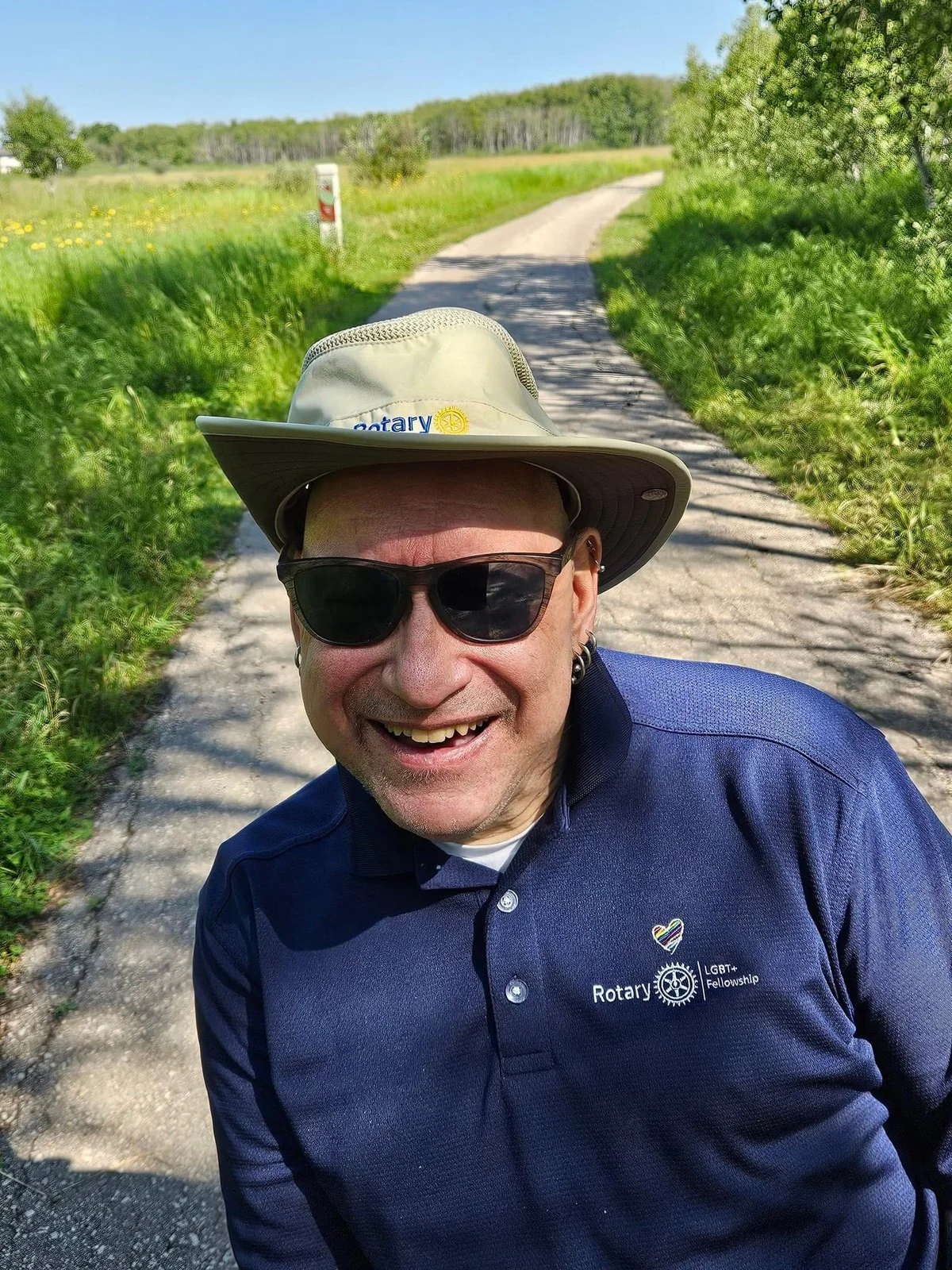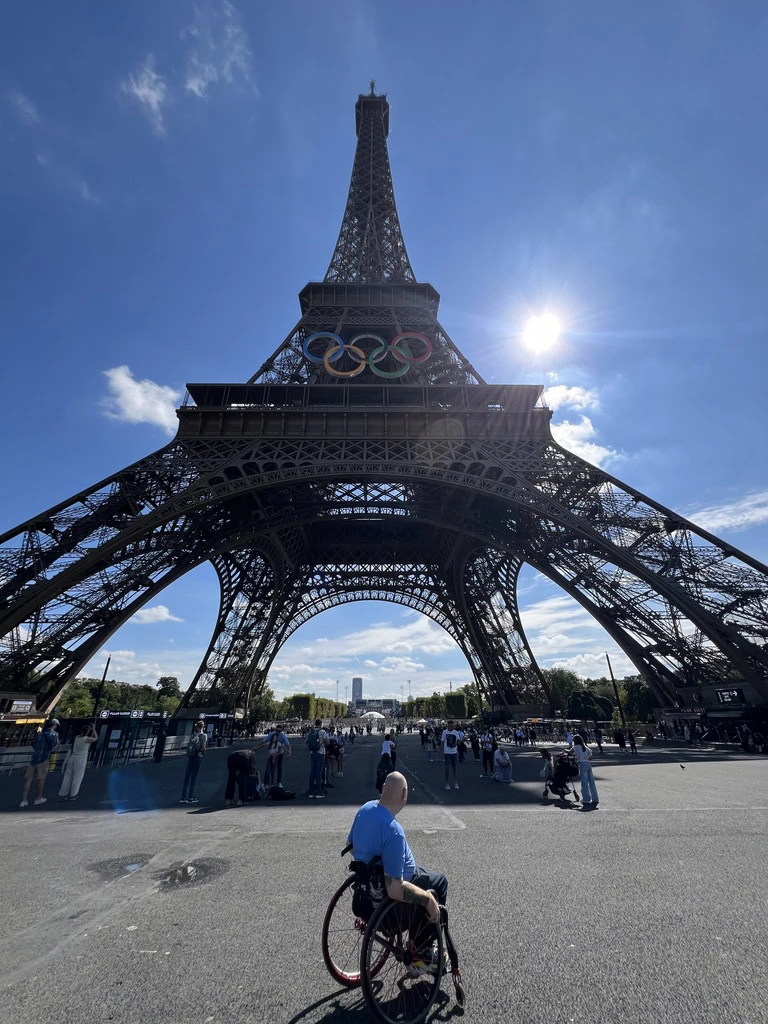On the edge of the idyllic coastal city of Yarmouth, Maine, a trail weaves through a dense strip of forest. There are no steep sections, just flat or gentle slopes. Hundreds of feet of boardwalk, with minimal gaps between the flush wooden planks, carry nature lovers over the top of marshy wetlands.
This segment of the West Side Trail, which soon will extend to about 2.5 miles, was designed with accessibility in mind, explains trail coordinator Dan Ostrye, a member of the Rotary Club of Yarmouth, a partner in the project. And when Ostrye is out on a one-mile section that has already been completed, he often runs into people with limited mobility. “It’s so firm; it’s so flat, they don’t have roots to climb over,” he says. “These are all things that are impediments to people with disabilities.”
From hiking trails to airport concourses, travel can be challenging for anyone. For people with disabilities, a lack of accessible design or information can make it even tougher. But efforts are growing to reduce the barriers, from online platforms that make it easier to find suitable accommodations to excursions that meet the specific needs of tourists with disabilities.
“People think of travel as a luxury,” says Maayan Ziv, founder of Access Now, an online platform that shares accessibility information about businesses and attractions. “But I think the power of travel is that it touches so many aspects of life.”
An estimated one-sixth of the world’s population has some form of disability, a diverse group of people with a wide range of experiences and needs, not all of which require infrastructure investments. Hotels are realizing that travelers with autism, for instance, can find new sights and sounds challenging and may appreciate quieter check-in times or other low-sensory experiences.
Weighed down by negative news?
Our smart, bright, weekly newsletter is the uplift you’ve been looking for.
For years, the travel world was designed largely without consideration for this sizable portion of the population. But in 2018 to 2019, before the pandemic disrupted the travel industry, Americans with disabilities spent an estimated $58.7 billion on travel. And one of the largest travel segments is made up of older adults, a group for which disabilities are more common. “This industry is realizing the opportunity and starting to make investments,” says Ziv.
Still, gaps remain, and one place where inequities are particularly stark is the airport. For people who use mobility equipment like wheelchairs, flying is “the absolute worst” form of transit, says Peter Tonge, an accessibility consultant and a member of the Rotary Club of Winnipeg-Charleswood, Manitoba.

Boarding a plane requires moving to a special wheelchair and then to the seat. Many planes don’t have accessible bathrooms. And travelers’ equipment is often transported in the baggage hold, where mishaps are frequent: US airlines damaged, lost or delayed delivery of 11,527 wheelchairs and scooters in 2023, or about 1.4 out of every 100 pieces of equipment transported, according to the US Department of Transportation.
A frequent traveler, Tonge has had his manual wheelchair damaged about half the times he’s flown. Twice he needed to replace it entirely, a custom job that takes six months. “As long as airlines see mobility equipment as luggage, it’s never going to get the care and respect that it has to have,” he says.
Tonge is skeptical airlines will change without new laws, though he’s hopeful that grassroots advocacy is raising awareness. He’s playing his part, including on social media, where he posted about his experiences getting around Paris this summer to watch the Paralympics. And he is noticing shifts beyond the airport, including in his own community, as museums and popular cultural destinations take steps to meet the needs of all visitors.
In Winnipeg, Tonge’s consulting company is working with the Canadian Museum for Human Rights to improve accessibility, a rigorous process that involves auditing the physical space, reviewing programs and training staff.

Winnipeg’s Assiniboine Forest, one of the largest urban forests in Canada, is also becoming easier for people with disabilities to explore. The Winnipeg-Charleswood club is the park’s custodian and is spearheading an effort to improve facilities like washrooms and harden the trail surfaces, similar to the work at the West Side Trail project in Yarmouth, Maine.
Early in the Yarmouth project, a local leader urged trail builders to make the path accessible. As they planned the western side of the 11-mile trail network, they found that building to accessible standards didn’t involve much extra effort — and improved the trail for everyone who uses it. “Everybody thinks, ‘Well, that just makes it accessible for disabled people,’” Ostrye says. “That’s far from the truth. It’s the most sustainable trail that you can build.”
While many places say they are accessible, Ziv, who uses a wheelchair, has often found that features are lacking to meet people’s specific needs for diverse disabilities. That inspired her to launch Access Now, which includes a map where people share reports about specific accessibility features, such as sensory details like whether a space is quiet or scent-free, descriptions of bathrooms and entries, and whether braille or sign language is used.
What makes a space accessible is different for each person, explains Ziv. “If you provide people with information, they know what works for them.”
The feedback that Access Now users provide is identifying hurdles and leading to improvements, including on more than 60 sections of the 28,000-kilometer (17,000-mile) Trans Canada Trail network. The company is also working with tourism boards, like in Fort Lauderdale, Florida, where the city offers mats that enable beachgoing wheelchair users to traverse the sand and loans out big-tire beach wheelchairs.
Travel platforms are also making it easier for people to schedule stays that fit their needs. At every hotel room listed on the platform Wheel the World, for example, someone has used a tape measure to check details like the height of the bed and sink.
Arriving in a room that doesn’t work for the traveler is a frustrating start to a trip, says Joy Burns, Wheel the World’s alliances and community coordinator. She and her husband, who is quadriplegic and uses a wheelchair, have checked into wheelchair-accessible rooms only to find that the bed was too high. Meanwhile, others with different circumstances might need that higher bed.

The site details travel experiences ranging from vetted transport vans to guided group tours. As the disability travel sector grows, Burns sees a broader effect. “The more people see people with disabilities out having an adventure and out traveling, it makes them need to make things more accessible.”
Susan Sygall has cycled Scotland’s rugged Outer Hebrides islands and backpacked through Europe and Israel. While on a Rotary Ambassadorial Scholarship in Australia in 1978 to 1979, she hitchhiked across New Zealand. On a recent trip to Paris, Sygall, who uses a wheelchair, enjoyed the city’s expanded bike lanes.
Sygall, CEO and co-founder of Mobility International USA, worries that people with disabilities may be discouraged from traveling abroad, especially to study or volunteer, either by others or by their own perceptions of what’s possible. “I would always go to ‘yes,’” says Sygall, a member of the Rotary Club of Eugene, Oregon. “Then I think we just need to be focusing on the ‘how.’”
There are many tools and strategies that can make a trip happen. Mobility International hosts a clearinghouse with resources for international exchange for people with disabilities.
Despite the challenges, Sygall says the rewards of travel are immeasurable. “It’s the power of strangers becoming lifelong friends and how quickly that can happen.”
This story was produced in collaboration with Rotary magazine, the official publication of Rotary International.
The post Breaking Down Barriers for Travelers With Disabilities appeared first on Reasons to be Cheerful.




